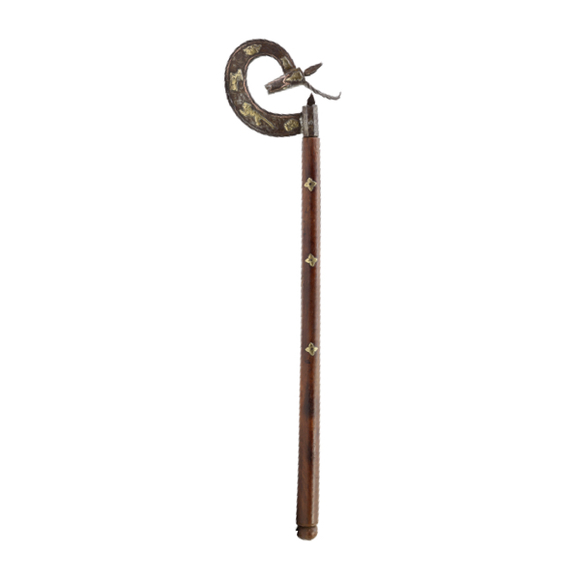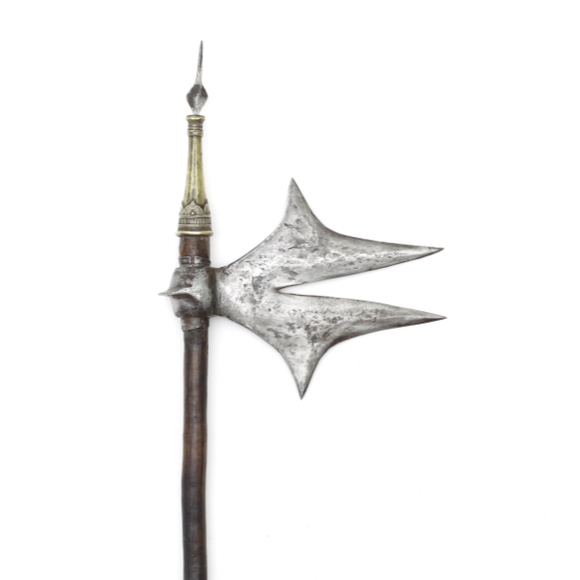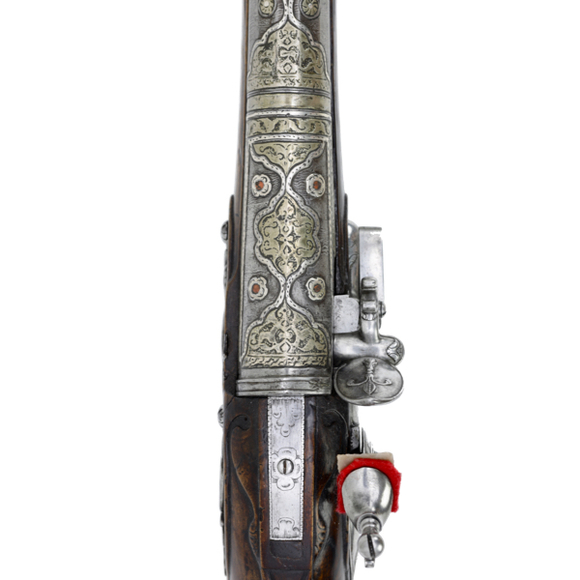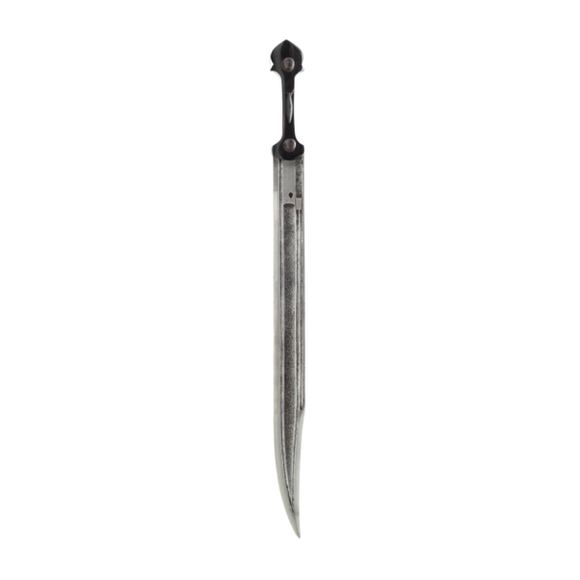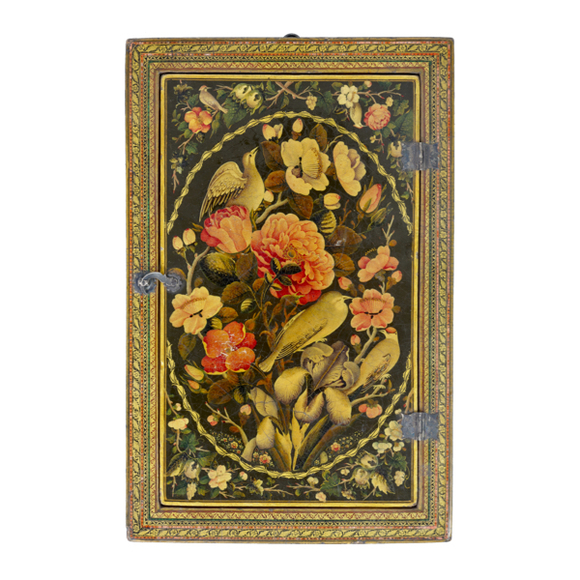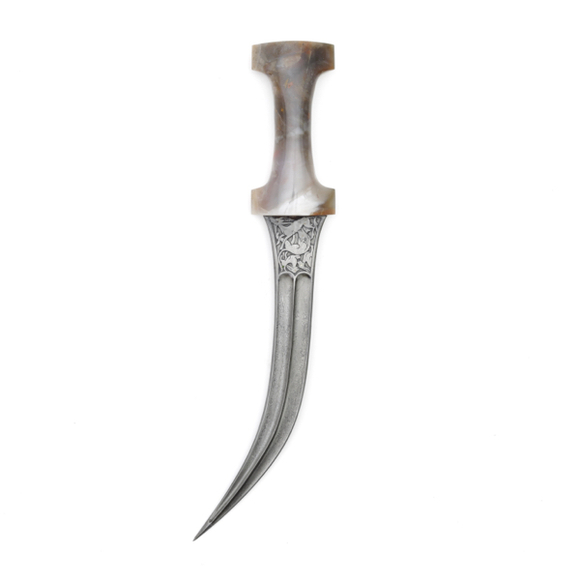An enigmatic type of axe, this one probably from tribal north India.

50.5 cm
9.9 x 11.2 cm
34 mm thick
47.2 cm overall
43 cm to base of head
Iron, steel, wood, lacquer, pigments
Persia
17th-18th century
Sold at Sotheby's London
16th October 1985
Description
This axe is built around a heavy crescent-shaped head with a shallow square hammer at the reverse. The wooden shaft has a round cross-section at the top and gradually widens while remaining the same thickness towards the end, resulting in an oval cross-section for most of its length.
The shaft is entirely lacquered black, decorated with spiraling lines and designs of stylized flowers in gold.
The style of decoration reminds strongly of Safavid lacquer work of the 17th and 18th centuries, which leads me to believe it is most likely from that period.
Attribution
This type of axe, with a crescent head, is often seen carried by dervish who seem to have preferred it over the more conventional forms of Islamic battle axes.
Dervish, from the Persian darvīsh (lit. “poor, needy”) was a name widely applied to people who chose to live in religious poverty, mainly Sufī ascetics who lived the life of a beggar.
A key element of the dervish’s equipment was an axe (tabarzīn) and a stick ('aşā), useful for defense against wild animals and highwaymen.1

A group of Dervish bashi, Isfahan, circa 1880.
Photographer Ernst Hoeltzer (1835-1911). Hotz Album, 11: 46.
Universitaire Bibliotheken Leiden.

Dervish men with their crescent axes. Left to right:
A Turkish Dervish. Date and photographer unknown.
A Dervish. Artist and date unknown.
A Dervish in Istanbul.. Pascal Sebah,1860s-1880s.
Jewish dervishes Agha-Jaan Darvish and his brother. Tehran, Iran, circa 1922.
Condition
The head sits tight on the shaft. Some wear and tear to the lacquer. See photos for details.
Provenance
The axe appears illustrated in the Sotheby's catalog Islamic Works of Art, Carpets and Textiles, London, Tuesday 15th October 1985 & Wednesday 16th October 1985. Lot 436.

It is described as:
"An Unusual Axe, 16th-17th Century, possibly Ottoman, the steel crescent blade with square hammer on haft of wood painted with gold flowers, 47cm; 181/2in
£500-700."
Notes
1. Gudrun Krämer, Denis Matringe, John Nawas and Everett Rowson (editors); The Encyclopedia of Islam. Three. Leiden, Brill. 2011. Pages 129-135.









Made of pasteboard, finely lacquered with roses and nightengales.
Nice Persian dagger with fine wootz blade and unusual hilt material.

